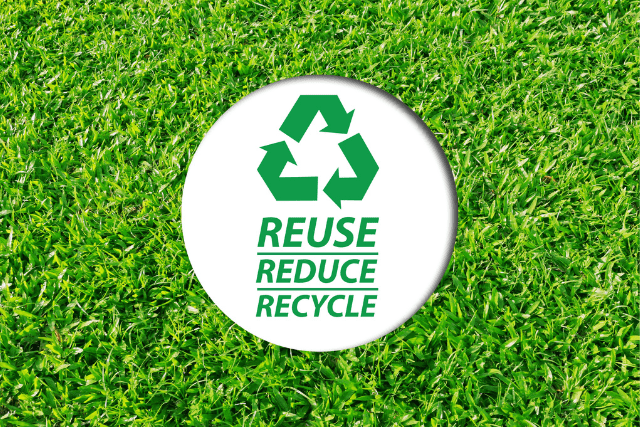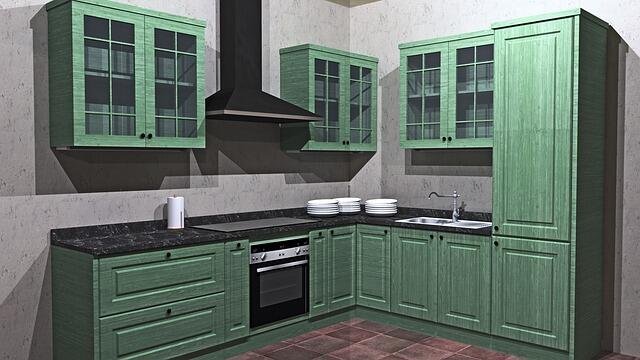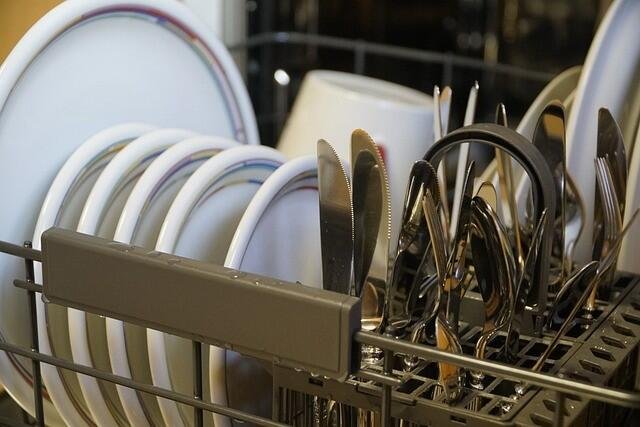Going green is a great way to help reduce our environmental footprint, and it can start as close to home as your kitchen.
Whether you’re just starting or want to take your commitment to the environment even further, here are some tips for going green in the kitchen.
From switching out single-use items for reusable alternatives to making intelligent choices at the grocery store, these eco-friendly suggestions will help you reduce waste and your impact on the planet.
Going Green
Going green is becoming increasingly popular among households in the United States and worldwide.
Reducing one’s environmental footprint can be achieved in various ways, and one of the most accessible places to start is in your kitchen!
Below are some great tips for going green that will help make your kitchen more eco-friendly.
- When it comes to making an effort to go green, starting small is key. Even small changes can make a difference.
- Replace plastic containers with glass or stainless steel ones, opt for reusable grocery bags instead of plastic bags when shopping, and switch out paper towels for cloth napkins or rags made from upcycled fabrics.
- You can also help reduce waste by not getting takeout and bringing your dishes when you eat.
Choose Reusable Items
One of the best ways to go green in the kitchen is to choose reusable items. Reusable containers, bags, and utensils are all great alternatives to single-use plastics.
Not only are they better for the environment, but they can also save you money in the long run.
Plus, many reusable items come in fun styles and colours to add a bit of personality to your cooking routine.
When shopping for reusable kitchen items, look for those made with sustainable materials like bamboo, stainless steel or glass.
These materials are typically non-toxic and don’t leach chemicals into food or drinks like some plastic products do.
Ensure that any containers and utensils you select are dishwasher safe so they’re easy to clean after every use.

Also, consider investing in multi-use kitchen tools such as a food processor or electric mixer that can be used for various tasks, from chopping vegetables to baking cakes.
Not only will these durable tools last longer than one-time-use appliances, but they’ll also help reduce waste from the packaging!
Also Read: 10 Proven Ways To Reduce Single-use Plastic in The Kitchen: Try and See The Difference
Reduce Waste
At home, one of the most effective ways to reduce waste is to keep track of your food and its expiration dates.
Keeping an inventory of what’s in your pantry and fridge will enable you to be more mindful about stocking up on items nearing their use-by date.
Planning meals for the week ahead can help you avoid impulse purchases and unnecessary trips to the grocery store.
Making a conscious effort to buy products with minimal packaging is another way to reduce kitchen waste.
Shopping at farmer’s markets or local stores where bulk items can be bought with reusable containers is a great way to get fresh ingredients while reducing plastic waste.
Choose unpackaged food such as root vegetables, fruits, grains, and legumes instead of canned or pre-packaged goods with high levels of added preservatives and generate unnecessary waste.
Lastly, investing in durable storage containers made from glass or stainless steel helps extend the shelf life of leftovers while reducing single-use plastic bags or wraps.
Reusable water bottles also reduce plastic waste when drinking water or taking food outdoors!
Invest in Energy Efficiency
Investing in energy-efficient kitchen appliances is one of the best ways to go green. Not only do these types of appliances save money on electricity and utility bills, they also reduce your carbon footprint.
Energy Star-rated refrigerators are up to 20% more efficient than non-rated models and can save nearly $200 a year in energy costs.
Additionally, look for dishwashers with a short cycle or air-dry setting and a sensor that knows when dishes are clean so it doesn’t continue rinsing unnecessarily.
Smart ovens with convection cooking use 25% less energy than traditional ovens, while LED lighting fixtures use 75% less energy than incandescent bulbs and last 25 times longer.
Installing low-flow faucets and showerheads can help conserve up to 50 gallons of water per day for the average household, saving you both money and resources.
Consider investing in an induction cooktop which is significantly more efficient than electric or gas ranges because it heats food directly instead of wasting heat on the surrounding surface area.
Sustainable appliances are an essential step for creating an energy-efficient kitchen. Choosing the right appliances can help reduce your carbon footprint, decrease water and energy consumption, and save you money in the long run.
Consider investing in low-flow options such as dishwashers and washing machines that use less water per cycle. This will help reduce your overall water usage while providing the same level of cleanliness.
Choose durable appliance materials such as stainless steel or ceramic instead of glass or plastic, which may require frequent replacement over time due to wear and tear.
By selecting sustainable appliances for your kitchen, you’ll be doing your part to reduce environmental impact while saving on utility bills every month – a win-win!
Remember these tips when deciding what kind of appliance is best suited for your needs to enjoy a green kitchen without sacrificing performance or convenience.
Also Read: What You Can Do To Reduce The Environmental Impact of Kitchen Appliances?

Buy Local Food
Buying local food is a great way to reduce your carbon footprint while also supporting the local economy.
Shopping at farmers markets or joining a CSA (community-supported agriculture) are two of the best ways to purchase locally grown, seasonal produce and other goods.
Not only does this help support small-scale farmers in your community, but buying from local producers also prevents excess packaging from being used.
Buying locally significantly reduces the fuel needed for transportation to get food from one place to another.
When shopping for groceries, try looking for “locally produced” labels on items like dairy, eggs, grains and meat products.
This will ensure that you’re buying fresh and sustainably produced goods that have been raised close by.
You can also find some excellent locally made condiments such as jams, jellies and honey that add great to any meal!
Supporting small businesses is an easy way to contribute positively towards sustainability goals while enjoying delicious treats.
Skip Disposables
One of the most significant ways to reduce your environmental impact in the kitchen is to skip disposables. This includes single-use items like plastic bags, paper plates, and utensils.
Reusable items such as cloth shopping bags and reusable water bottles can replace these items to help prevent unnecessary waste.
Instead of using disposable cooking ware such as aluminum foil or parchment paper, opt for reusable cookware like glass bakeware or stainless steel pans, which can be used repeatedly.
Investing in quality cookware that lasts will save money and help reduce landfill waste over time.
Regarding food storage, use air-tight containers rather than plastic wrap or cling wrap whenever possible.
Glass containers are great for storing food because they are easily washable and don’t leach chemicals into food as some plastics do.
It’s important to avoid purchasing products packaged with excessive amounts of plastic packaging or Styrofoam when grocery shopping – instead, bring your reusable bags and check if there are bulk options available that require less packaging materials.
Clean with Natural Products
When cleaning the kitchen, using natural products can be an easy and effective way to go green.
Natural cleaners are made with plant-derived ingredients, making them safer for the environment, our health, and our pets.
A variety of natural products are available on the market, including all-purpose cleaners, dish soaps, laundry detergents, window cleaners and more. Often, these items can be found at your local grocery or health food store.
For basic household cleaning needs such as countertops or sinks, baking soda is an excellent natural cleanser that is both environmentally friendly and affordable.
Simply mix baking soda with warm water to make a paste and apply it directly to any surface needing a good cleaning. If desired, you may also add a few drops of essential oils for added fragrance.
Vinegar is another powerful solution for cleaning and deodorizing in the kitchen; dilute vinegar with equal parts water in a spray bottle for an all-purpose cleaner that is safe to use on most surfaces without damaging them.

Going Green in the Kitchen: Making a Difference
Making an impact on the environment begins with little adjustments at home. Greening up your kitchen is a terrific place to start.
There are numerous ways to lower your carbon footprint and build a more sustainable lifestyle, from replacing traditional appliances with energy-efficient models to trading out plastic items for reusable products and composting leftovers.
Implementing one or two of these suggestions can immediately reduce your environmental impact.
Raising awareness about the necessity of green living might motivate others to do their part to protect our planet.
We can ensure that our world will be here for future generations to enjoy by making efforts today to create greener behaviors.







